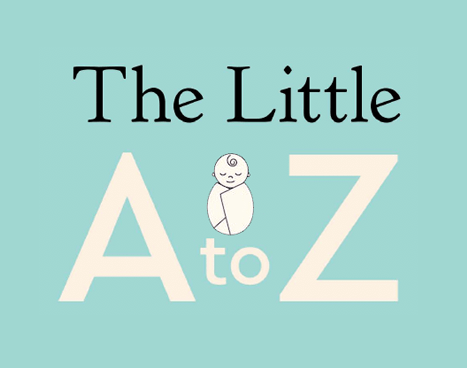Quiet Kids Book Review: Part 1
Why understanding introversion is important

I have been dying to get this book review out. When I started typing away this past weekend I quickly realized that the topic of introversion is vast and
Quiet Kids is, by consequence, quite dense. So like I did with the three-part series on
Breaking the Mold
by Professor Bailyn, I am going to slice
Quiet Kids into bite-sized review pieces. Today's first part of the review is going to start by providing the impetus behind my choice of this book, then introducing the concepts of introversion and extroversion, and lastly debunking some fairly important myths about what it means to be an introvert.
Context
Some weeks back, I briefly shared my motivation for choosing Quiet Kids as my first book review of 2022. My husband faced a lot of difficulties in childhood with school social settings. The minute he started observing similar behaviors in little Clyde, my husband reacted with a high degree of emotion. The only way to explain it was like he was reliving his childhood and wanted desperately for little Clyde to chart a different course. Despite his best efforts at encouraging our son to shake himself of his inhibitions, our son's reticence and timidness did not dissipate (not surprising right?). So our quest began to better understand why little Clyde hated circle time, duck-duck-goose, sing-a-longs and loud noises.
Turns out, like me, Clyde is an introvert. But unlike me, who grew up in a home of introverts who all supported each other's need for quiet and solitude, our son is growing up in a mixed temperament home within a generalized culture geared towards extroverts. In fact, many might say there is no better place than the United States to be extroverted. Traits such as social, outgoing, collaborative, gregarious, and loud are prized—whether in the workforce or the community. Therefore, the education system has over time adapted to prepare children for an ever-increasingly team-oriented yet competitive workforce.
Fonseca's subtitle of her book pretty much sums up the conundrum parents of introverts face: how to help your introverted child succeed in an extroverted world. She thoughtfully lays out tools and tricks to supporting introverted children, starting with the most important steps at home then taking these tips to social settings and finally the school. Her book is not a manifesto to change the DNA of our culture. It is rather a handbook to help introverts navigate a world that feels largely uncomfortable to them.
The book is neatly laid out into sections, beginning with the fundamental task of educating us as readers, parents and human beings as to what introversion and extroversion are, and more importantly what they are not. She then builds her arguments and solutions in a concentric fashion, moving outwards as though through the layers of an onion: home, school and play. There are plenty of opportunities to reflect on what you are learning, to take notes or to complete worksheets. After having finished the book, I would definitely say this is one worth purchasing if you think you have an introverted child because, as Fonseca warns, the strategies laid out in the book will not come easily nor transform a situation overnight. The strategies require practice and consistency over the course of a child's upbringing.
So today let's look a bit at what is introversion and extroversion. Then next week we will dive into some of the tools and strategies as applied to various social settings.
Understanding Introversion and Extroversion
The first few chapters of Fonseca's book is devoted to unpacking the science and mythology around introversion and extroversion. I can't say enough how helpful this opening section of her book is. I had an 'aha' moment about every paragraph as I read about the biological differences between introverts and extroverts and how these differences come to manifest themselves through day-to-day behaviours. I kept saying to myself, “My husband needs to read this book! Now I get why we have tensions over X or don't see eye-to-eye on Y.” In short, even though I picked up this book to better understand how to help my son, it quickly became obvious that I am living in a mixed temperament household; and therefore the book could be invaluable for all of us and our relationships with each other.
So let's start with the science.
As humans we are made up of two things: temperament and personality. The first is inherent. The second is mutable. Though we can learn how to cope and manage negative expressions of our temperament, we cannot change it. In other words, external situations will naturally produce certain tendencies to react. The best we can do is develop strategies to improve how we react, and make our reactions as positive as possible. This applies to both extroverts and introverts.
Biologically the differences between extroverts and introverts can be crudely summed up as how we process energy and how we seek stimuli. Extroverts tend to process energy by using it, seeking stimuli in their external environment. Introverts on the other hand process energy by conserving it, and do so mainly by favoring solitude, deep introspection and quiet. These biological differences translate into 3 major categories of behavior: (i) communication skills; (ii) the renewal pattern; and (iii) learning. Intuitively you may already guess how introverts and extroverts may differ in their behaviors with respect to these three categories. Fonseca does a table brilliantly simplifying these behaviors. I have summarized it here:
Extroverts:
Communication skills —outgoing and talkative
Renewal pattern—seeks stimulation from outside through connections and actions
Learning—does so through interaction and action with the outside world, impulsive and risk-taking
Introverts:
Communication skills—reserve and quiet, prefer to listen rather than speak, good conversationalist in small groups
Renewal pattern—through solitude and contemplation
Leaning—by watching and through contemplation and introspection
Just as each has positive traits, each can equally have negative expressions. Extroverts become burnout easily from over stimuli while introverts may become reclusive if left on their own for too long. Important to absorb is that both temperaments have attributes that the other could embrace and learn from. It is a matter of moderation. For instance, Fonseca suggests that, “The extrovert can learn how to think more deliberately and to learn how to relax. The introvert, on the other hand, can learn how to be more social and outgoing when the situation calls for it.” When I read those lines, a little lightbulb went off in my head: this is my husband and me, respectively!
Debunking the Myths
Fonseca then challenges the reader regarding certain myths about introversion. I have summarized the two most common ones she cites here below:
Myth 1:
Introverts are self-centered and self-absorbed. According to Fonseca, we have Freud to blame for first pathologising introverts as self-centered and self-absorbed. She argues the reality is far more complex. Introverts are deep thinkers and their tendency to be lost in thought is misinterpreted as narcissistic behavior. In fact because introverts are deep thinkers and feelers, they make really good friends with ample supplies of empathy for their peers. In order to unleash their strength, efforts simply need to be made for them to interact in small groups where they feel comfortable to contribute their ideas.
Myth 2:
Introverts prefer to be alone. Introverts are often equated with being loners when in fact they crave and nurture very successfully deep friendships. Individuals who can lead conversation and questioning with an introvert succeed in building the type of trust that an introvert needs to establish meaningful connections with peers. Unlike extroverts, introverts prefer one or two strong friendships they can nurture, as opposed to a plethora of ones they have to expend considerable energy maintaining.
Adopting a New Perspective on Introversion
After reading the first 4 chapters of the book, as readers, parents and possibly educators, we should be feeling challenged in our thinking about the common traits and characteristics of an introvert. Rather than seeking to make introverts less this or that, Fonseca makes a compelling case that there is in fact nothing wrong with introverts and that many of their behaviors are important contributions to group settings. Through an exploration of the biology of introversion and extroversion the reader has hopefully gained an appreciation for what makes an introvert tick and also some of the pitfalls. Next week we will look at how our understanding of what is and isn't mutable about being an introvert gets carried into group settings, and how we can help our children navigate home, playground and school.









